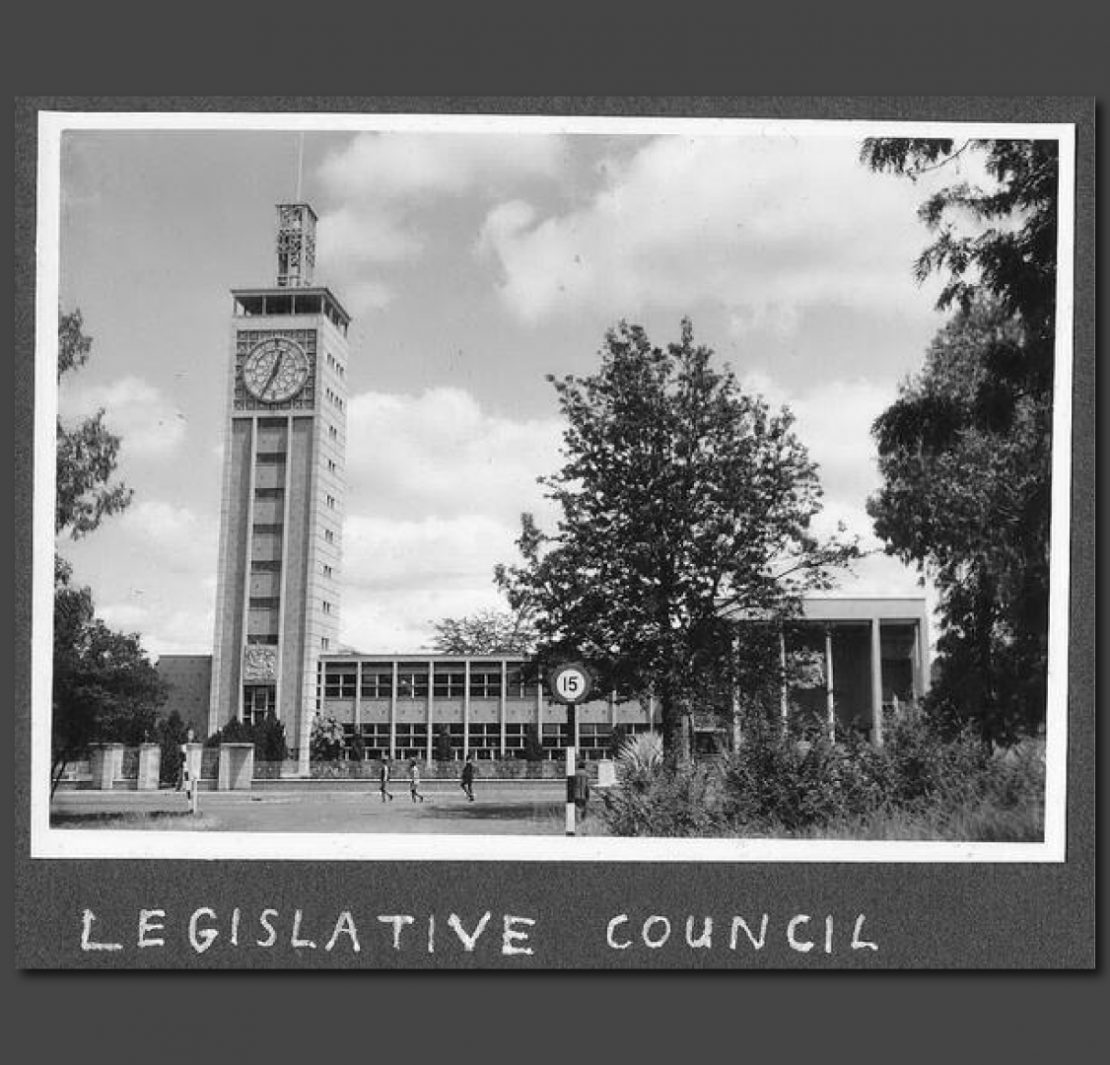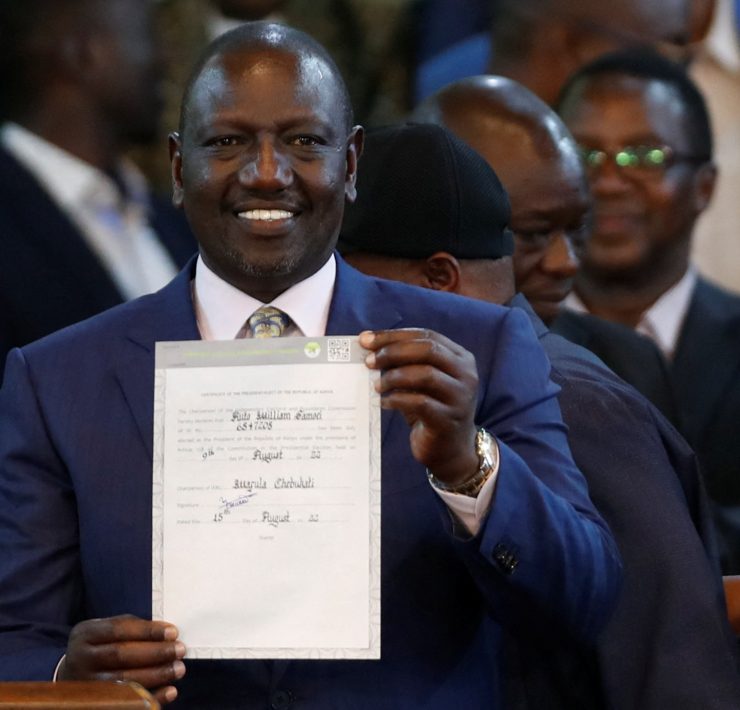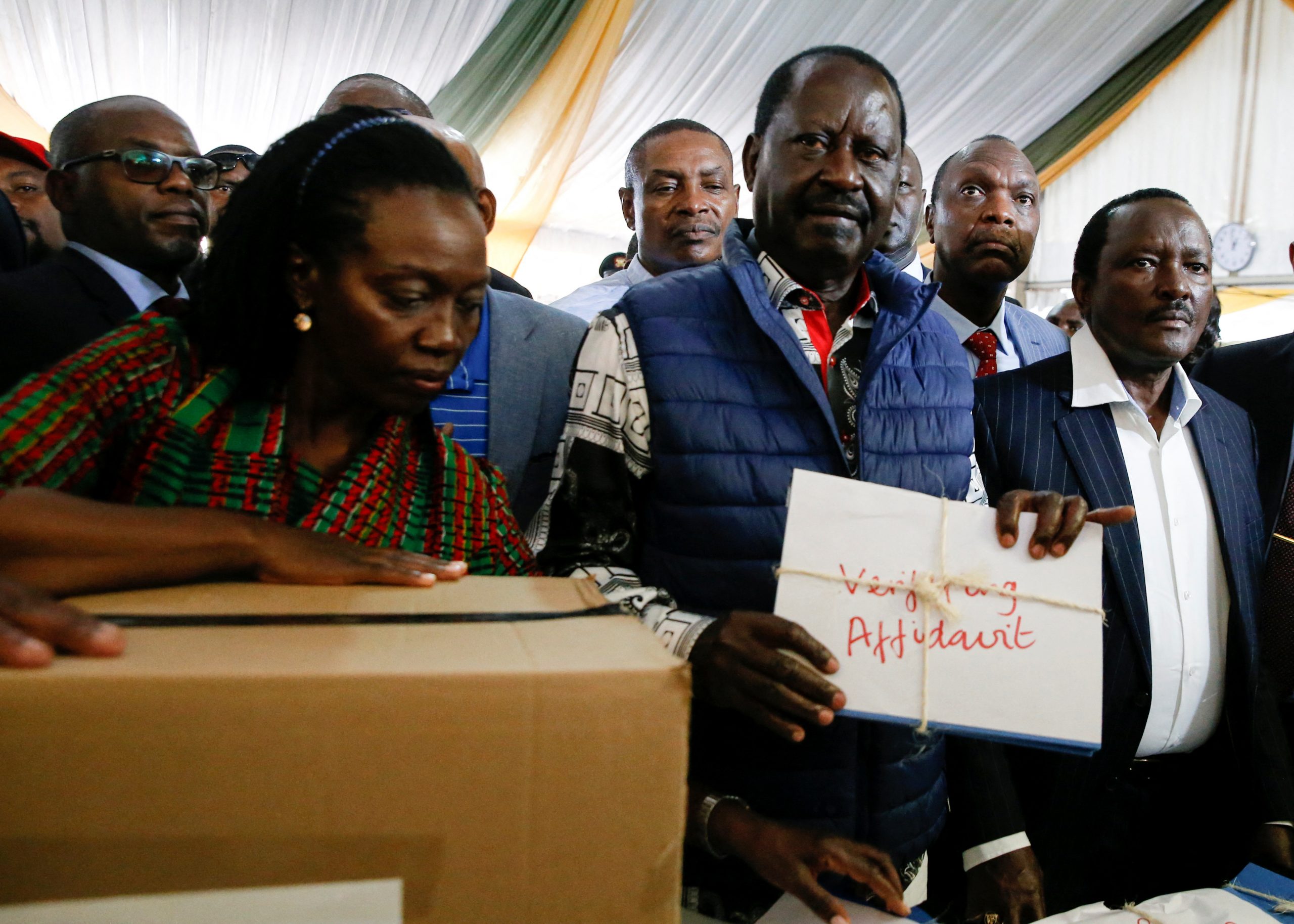| 1961 |
- Kenya holds elections in which 20 seats were reserved for minority communities; 10 for whites, 8 for Indians and 2 for Arabs and there were 12 nominated members.
- The Kenya African National Union (KANU) wins 19 of the 53 elected seats.
- The 1961 elections culminated into a 65-Member Parliament bringing, for the first time, an African-majority LegCo: Africans (19), Europeans (10), Asians (8), (Arabs 2)
|
| 1962 |
- The 1962 Lancaster House Constitutional review has LegCo replaced by a Bicameral Parliament.
- The parliament is to consist of the 41 Senators representing 40 Administrative Districts and Nairobi and 117 House of Representatives Constituency members and 12 specially elected members chosen by the House sitting in an electoral college and the Attorney General as an ex-officio member.
|
| 1963 |
- After the final constitution review in February 1963, a general election is held between 18 and 26 May 1963 just before independence. KANU led by Jomo Kenyatta wins an overall majority against other parties.
- June 1, Kenya’s independent self rule commences.
- June 7, the Senate holds its first sitting with Hon. Timothy Chitasi Muinga Chokwe as its speaker.
- December 6 the Parliament of Kenya receives its Royal Charter to commence its business under the independent nation
|
| 1964 |
- December 12, Kenya becomes a republic with Jomo Kenyatta as its president.
- November 2, opens the senate chamber of the House whose construction had begun in 1963.
|
| 1966 |
- MPs pass a constitutional amendment, the Constitution of Kenya Amendment (No2) Act N0 17 of 1966/Turncoat Rule, that required MPs who defected from their parties to seek re-election.
- A number of by-elections are held on 11 and 12 June 1966 following the defection of the then Vice President, Jaramogi Oginga and other 29 members from KANU to establish the Kenya People’s Union (KPU).
|
| 1966 |
- The Upper House (The Senate) is abolished and both houses combined into a single chamber reverting Kenya to a unicameral system of Parliament, the National Assembly.
- The house comprises of 158 constituency elected members, 12 specially elected members and 2 ex-officio members: the Speaker and the Attorney General. This became effected on 5 January 1967
- References to the Senate are deleted and the term of the National Assembly extended to end in June 1970 instead of 1968.
|
| 1967 |
- February 15, the National Assembly sits for the first time as a unicameral house.
|
| 1968 |
- Provincial Councils are abolished and references of it in the constitution deleted.
|
| 1969 |
- First parliament is dissolved on 7 November and general elections held on 6 December 1969.
- 158 members elected of which 157 are men and 1 woman. Hon Grace Onyango is elected as the first woman Member of Parliament representing Kisumu Town Constituency.
|
| 1970 |
- Hon. Fredrick Mbiti G. Mati becomes the first African to become Speaker of the National Assembly with Leonard Ngugi as the first clerk of the National Assembly.
|
| 1974 |
- The second Parliament is dissolved on 8 September 1974 and elections are called for 14 October 14 1974.
- Three women elected: Grace Onyango retains her Kisumu Town seat and is joined by Hon. Dr. Julia Auma Ojiambo (Busia Central) and the Hon. Philomena Chelagat Mutai (Eldoret North).
- President Jomo Kenyatta nominates Dr. Eddah Gachukia and Jemimah Gecaga as members of Parliament, bringing the total number of women in parliament to five.
|
| 1978 |
- August 22, Mzee Jomo Kenyatta dies and is succeeded by his Vice President Daniel arap Moi
|
| 1979 |
- The legislative term of the National Assembly elected in 1974 expires on 20 September 1979 and the general election is held on 8 November, marking the third general election since independence.
- Kenyans of European and Asian origin are elected into the house: Philip Leakey a Kenyan of European origin wins the Lang’ata Constituency seat while Krishan Chander Gautama, an Asian wins the Parklands seat.
|
| 1982 |
- June 10, parliament passes a constitutional amendment that officially declares Kenya a one party state. From 1969 to 1982 Kenya had been a de facto one party state, with the Kenya African National Union (KANU) alone contesting elections.
|
| 1983 |
- President Daniel Arap Moi dissolves Parliament on 15 July 1983, a year before the end of its term (1984) and general elections are held on 26 September 1983.
- Only two women are elected out of the 158 members.
|
| 1988 |
- The numbers of parliamentary seats are increased from 158 to 188 elected members, 12 nominated members and 2 ex-officio members totaling to 202 members.
- Two women are elected into parliament; Hon Grace Ogot (Gem Constituency and Hon Agnes Ndetei (Kibwezi) and one nominated, Hon Nyiva Mwendwa
|
| 1992 |
- The first election is held after the reintroduction of multiparty politics, following the repeal of Section 2 (A) of the Constitution in December 1991, on 29 December 1992.
- Out of 188 seats in parliament, 100 are taken by KANU while the remaining 88 are taken by the newly formed opposition parties: FORD – Kenya (31), FORD – Asili (31), Democratic Party (23), Kenya Social Congress (1), Kenya National Congress (1) and Party of Independent Candidates of Kenya (1).
|
| 1997 |
- The 7th Parliament is dissolved on 10 November and the eighth parliament elected with an increased membership of 210 in the 29-30 December general election.
|
| 2002 |
- The election of 2002 sees KANU lose dominance in parliament as the National Rainbow Coalition wins with an overwhelming majority of 125 seats out of 210. KANU won 64 seats. The remaining seats were shared by five other parties: FORD-People 14; Safina two; Sisi Kwa Sisi Party two; FORD – Asili two and Shirikisho one.
|
| 2002 |
- The general election of 2007 sees Orange Democratic Party garner 101 seats out of 210 and gain majority lead in parliament.
- 23 parties were represented in the parliament – the highest number ever.
- The number of women increased to 21 with 15 elected and 6 nominated.
- October 22, parliament is dissolved paving way for the 10th parliament.
|
| 2010 |
- August 27, a new constitution is promulgated introducing a devolved form of government and parliament reverts to a bicameral system.
|
| 2013 |
- January 13, the 10th parliament under the Speakership of Kenneth Marende and that accommodated a coalition government, is dissolved.
- March 4, Kenya holds the first election under the new Constitution voting in the inaugural bicameral parliament with the Senate having 69 members (47 elected and 12 nominated) and 349 members of the National Assembly (290 constituency members, 47 County Women Representatives and 12 nominated members).
|
| 2017 |
- The general election is held on 8 August 2017 ushering the 12th parliament with a Jubilee Party having majority in both the National Assembly and Senate.
- Justin Muturi is elected speaker of the National Assembly with Kenneth Lusaka in the Senate.
|
| 2022 |
- The general election on 9 August births the 13th parliament. The National Assembly is composed of 76 elected women and 260 men, while senate has 44 elected men members and 3 elected women members.
|



